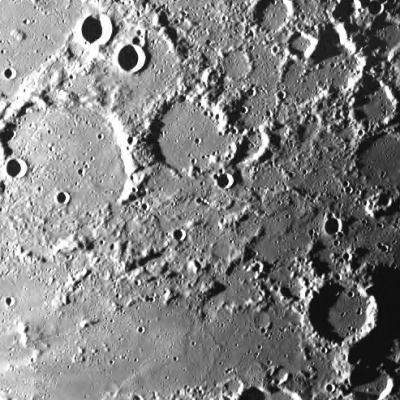A NEW BEGINNING FOR LPOD AND LUNAR SCIENCE

Explanation:
SMART-1, which has been called SLOW-1 because of its
13.5 month-long voyage to the Moon has finally started
imaging the surface. This is one of the images
released by ESA showing data taken on the first close
approach in early January. The area shown is near the
North Pole ? the craters Mouchez (82 km diameter,
middle left) and Gioja (42 km, bottom right) are
conspicuous. The relatively smooth plain that looks
almost like a piece of Mare Frigoris is thought to be
ejecta from Imbrium or earlier basins that was
deposited in a fluidized condition so it acted almost
like a liquid. Although the highest resolution for the
SMART-1 cameras is 27 m (only achieved when the
spacecraft is within 300 km of the surface) these
first released images were taken from a higher
altitude and have a resolution slightly lower than
Lunar Orbiter IV, but minus the distracting strip
boundaries. It has been a decade since the last images
were taken from lunar orbit (Clementine) so the new
data are highly welcome and hopefully will usher in a
new era of lunar discoveries and excitement!
